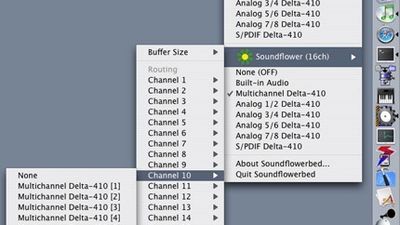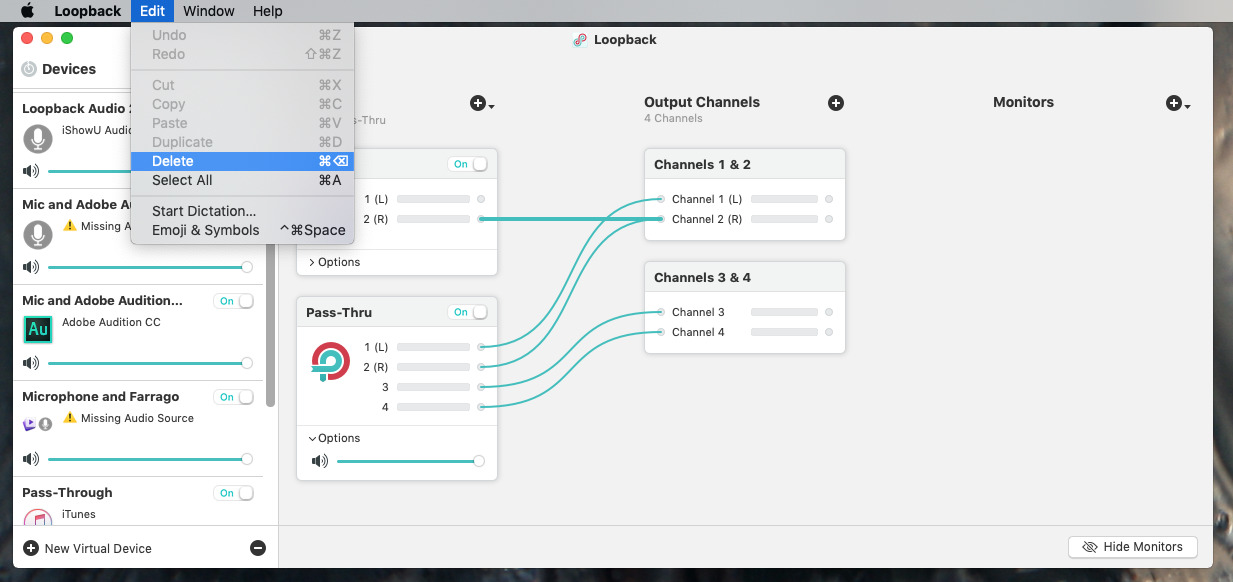

- #FREE AUDIO LOOPBACK SOFTWARE FOR MAC HOW TO#
- #FREE AUDIO LOOPBACK SOFTWARE FOR MAC INSTALL#
- #FREE AUDIO LOOPBACK SOFTWARE FOR MAC TRIAL#
- #FREE AUDIO LOOPBACK SOFTWARE FOR MAC DOWNLOAD#
- #FREE AUDIO LOOPBACK SOFTWARE FOR MAC FREE#
But sometimes, the volume icon in the menu bar is grayed out and the volume can only be manipulated in Audio Midi Setup.
#FREE AUDIO LOOPBACK SOFTWARE FOR MAC HOW TO#
It has stopped working a few times before, and while I haven't exactly identified how to mitigate the issue, I have noticed that something of the following may have helped to get it working again: When originally composing this answer, I couldn't get it to work even though I hadn't modified the setup that was working the day before. HOWEVER, while the above will work at times, I have noticed that the behaviour of Soundflower can be erratic from time to time. Tip: You can also change the Input/Output settings by holding ⌥ ( alt/opt) and left-clicking the Volume icon in the OS X menu bar. You can either do this through hardware (route the outputs to the inputs and back again and don’t monitor everything to avoid feedback) or through software (much easier) with a program called Loopback. Step 3: With Loopback Audio installed, time to set it up.
#FREE AUDIO LOOPBACK SOFTWARE FOR MAC INSTALL#
You will need to do a loopback with your interface to your mac. Step 2: Install the software by running the installer you just downloaded. Now that you have created a Multi-Output Device, go back to System Preferences > Sound and select it on the Output tab as in Step 2. First off, unlike PCs desktop audio can’t be easily routed to specific programs. Now you can hear audio as usual while routing the Output into your Input via Soundflower. Mark to use both your Built-in Output and Soundflower (2ch). Press the + button in the bottom left corner, and press Create Multi-Output Device. It's located in your Applications folder under /Applications/Utilities. your Built-in speakers or attached headphones), you need to open the native OS X application Audio Midi Setup. If you want to hear the audio while it's playing on your normal Output device (e.g. You are now routing your Output to Input, and will be able to record the audio playing to an application like QuickTime, Evernote or Just Play Record. If you're okay with not having to hear the output yourself, you can now go to the Output tab and select Soundflower (2ch). If you want to route the audio and hear it yourself at the same time, skip to Step 3. Go to the Input tab and select Soundflower (2ch) as the input device. Step 1Īfter installation, a new device will be available in System Preferences > Sound. It does this by routing your audio output as an audio input to the system. Soundflower is a virtual audio device for OS X that can pass audio from applications to other applications.
#FREE AUDIO LOOPBACK SOFTWARE FOR MAC TRIAL#
Again, it is a paid product with a trial mode. It solves some issues with Soundflower, like reenabling volume up/down via the Mac media keys. Through April 30, Six Colors readers can save 21% with coupon code SIXLB.Rogue Amoeba, the previous maintainers of the open source Soundflower project, has a new (paid) application called Loopback which seems to be easier and more dependable to work with than Soundflower.
#FREE AUDIO LOOPBACK SOFTWARE FOR MAC FREE#
Whether you’re a podcaster, a live performer, a tabletop gamer, or even just someone stuck on too many Zoom calls, Loopback can help you. Check out Loopback today, with a free trial. Configure, adjust, and experiment, just by clicking and dragging. Loopback’s intuitive wire-based setup makes it easy and obvious to understand exactly how your virtual devices work. It’s incredibly powerful.įortunately, it’s also incredibly easy to use. These virtual devices appear on your Mac just like a real, physical device, and can be selected for use in any audio app on your Mac.
#FREE AUDIO LOOPBACK SOFTWARE FOR MAC DOWNLOAD#
Download the trial and experiment with it so you understand the concept of what you can do with it to accomplish what you want. The most general solution and expensive solution is Loopback.

Loopback creates virtual audio devices, which merge audio from multiple applications and input devices into a single source. They have several programs that do audio routing with the Macs Core Audio system that allow you to do what you want. It’s like a high-end mixing board, right inside your Mac. Need to play a recording into Zoom? Add sound effects into a podcast? Include music in a streamed event? Loopback gives you the power to do just that with just a few clicks.

With Loopback it’s trivial to pass audio from one application to another on your Mac. Loopback: Powerful cable-free audio routing ↦


 0 kommentar(er)
0 kommentar(er)
